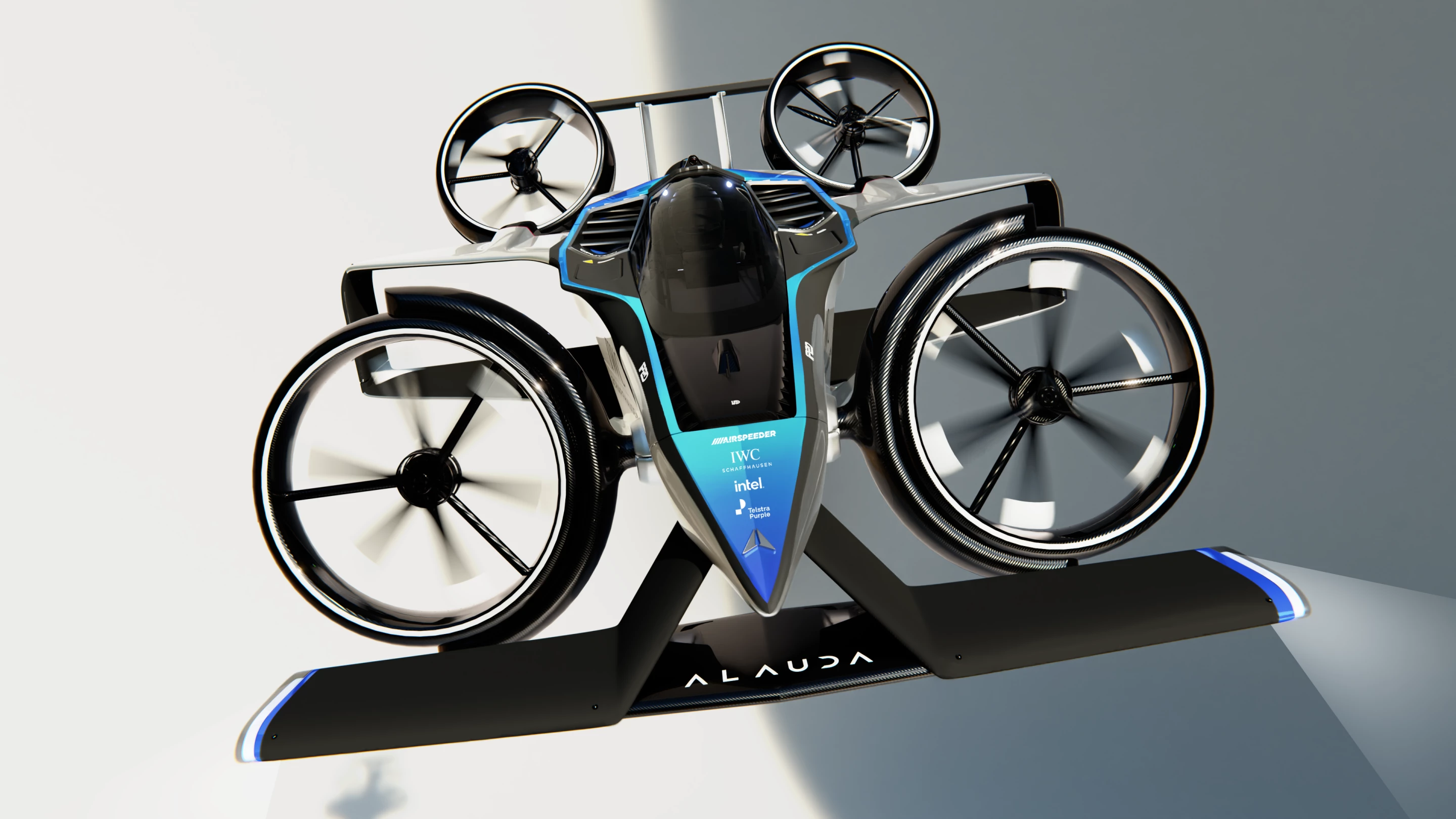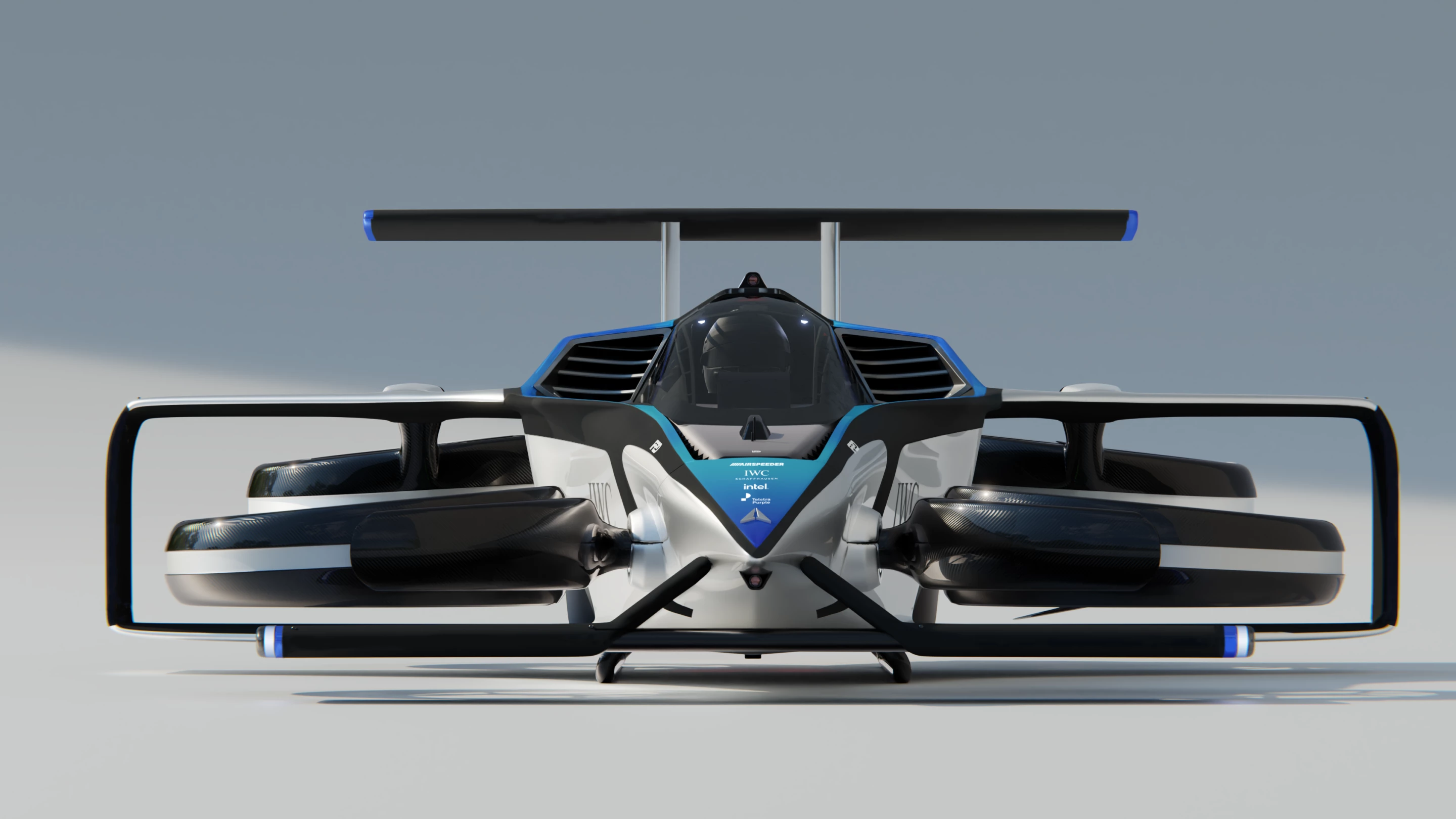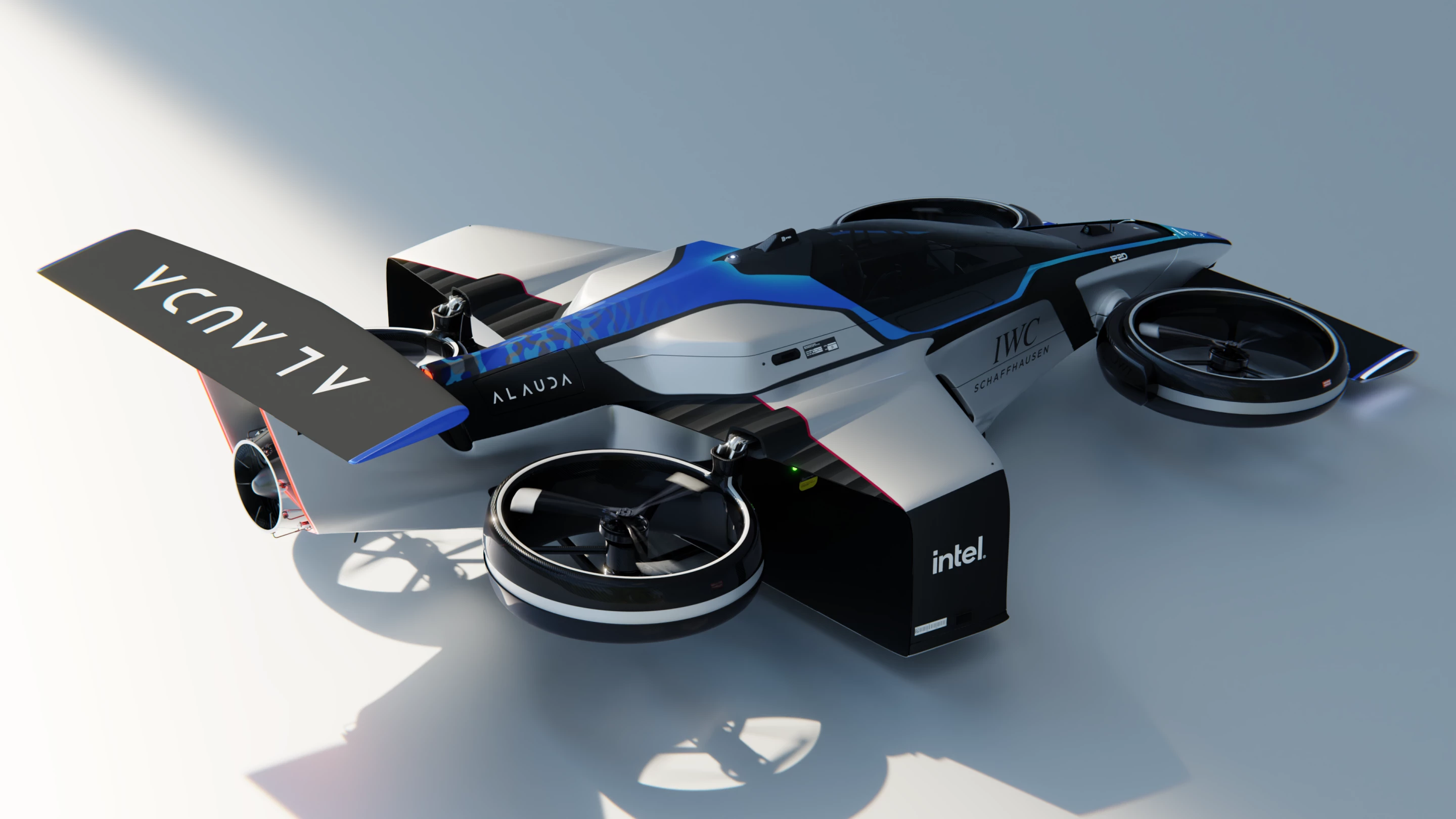Following more than 350 test flights and two demonstration races of its remotely piloted Airspeeder Mk3 eVTOL, Alauda Aeronautics has revealed the design for the first crewed racer – which boasts a top speed of 360 km/h and a range of 300 km.
Back in 2017, Australia's Matt Pearson launched a Kickstarter that proposed building manned electric vertical take-off and landing – or eVTOL – racing machines and creating a new aerial sport around them. The Alauda Aeronautics team canceled the campaign after only attracting 49 backers, but vowed to continue development.
Airspeeder made its international public debut in 2019, and launched a full-sized working prototype in early 2021. After lots and lots of testing and tweaking, a remotely piloted drag race later that year was followed in 2022 by an uncrewed EAX Series head-to-head around a kilometer-long circuit near Adelaide.
Now the renders for the first crewed eVTOL racer, the Mk4, have landed and reveal a complete redesign. Full details are still to come, but we do know that the new racing eVTOL measures 5.73 m long (18.79 ft), 3.62 m wide (11.87 ft) and 1.44 m high (4.72 ft), and tips the scales at 950 kg (2,094 lb).
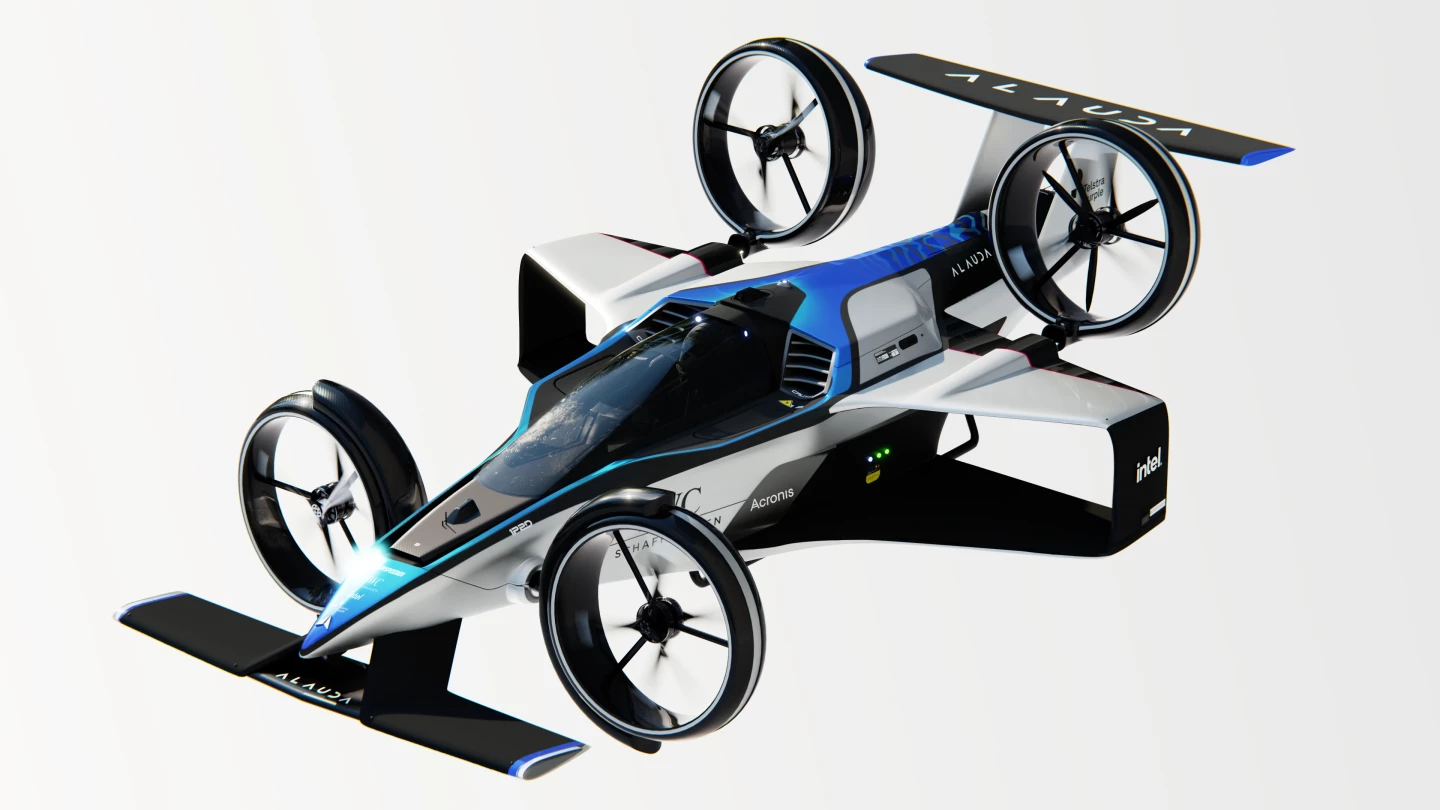
Where the Mk3 remotely piloted flyer was 100% battery-electric, Alauda has included a 1,000-kW (1,340-hp) hydrogen turbogenerator in the Mk4 manned racer to power the batteries and motors. This Thunderstrike engine features "a unique combuster made using 3D printing techniques developed in the space industry for rocket engines. The combuster's design keeps the hydrogen flame temperature relatively low, greatly reducing nitrous oxide emissions." The intention is to source green hydrogen for the fuel to keep the carbon footprint as low as possible.
The Airspeeder Mk4 is reported capable of zipping from a standing start to its top speed of 360 km/h (223.6 mph) in 30 seconds. The four pairs of shielded rotors are mounted to 3D-printed gimbals, with an AI-powered flight controller adjusting tilt angle for take-off and flight. "This makes the Mk4 not only fast in a straight line, but also able to maneuver with the incredible precision essential in close-action racing," the press release reads. "In fact, it handles less like a multicopter and more like a jet fighter or Formula 1 racing car."
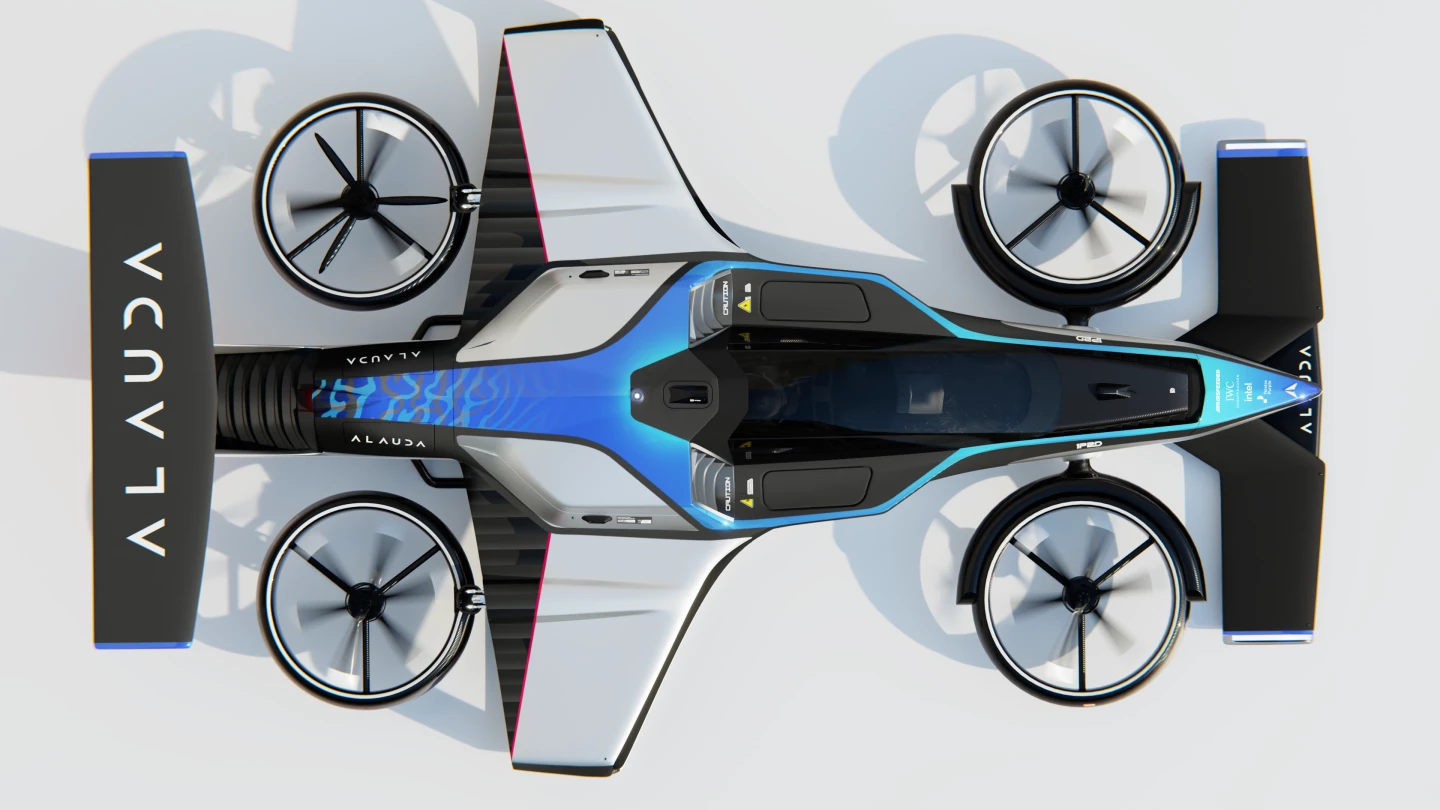
As you can see from the supplied images, the Mk4 also rocks F1 race car looks, with the carbon fiber monocoque sporting sizable air intakes and front and rear wings plus short mid-body box wings. Cameras, sensors and comms equipment can also be seen dotted around the frame, though details on such things have not been shared at this stage.
The Airspeeder Mk4 will make its public debut at Southern Australia's Southstart innovation festival on March 9. Alauda says that flight testing is already underway, that team entries for the crewed racing series are now open for entries and that the first races should happen some time in 2024. The video below has more.
"We, and the world, are ready for crewed flying car racing," said Pearson. "We have built the vehicles, developed the sport, secured the venues, attracted the sponsors and technical partners. Now is the time for the world’s most progressive, innovative and ambitious automotive brands, OEM manufacturers and motorsport teams to be part of a truly revolutionary new motorsport. In unveiling the crewed Airspeeder Mk4 we show the vehicles that will battle it out in blade-to-blade racing crewed by the most highly-skilled pilots in their fields."
Source: Alauda Aeronautics

